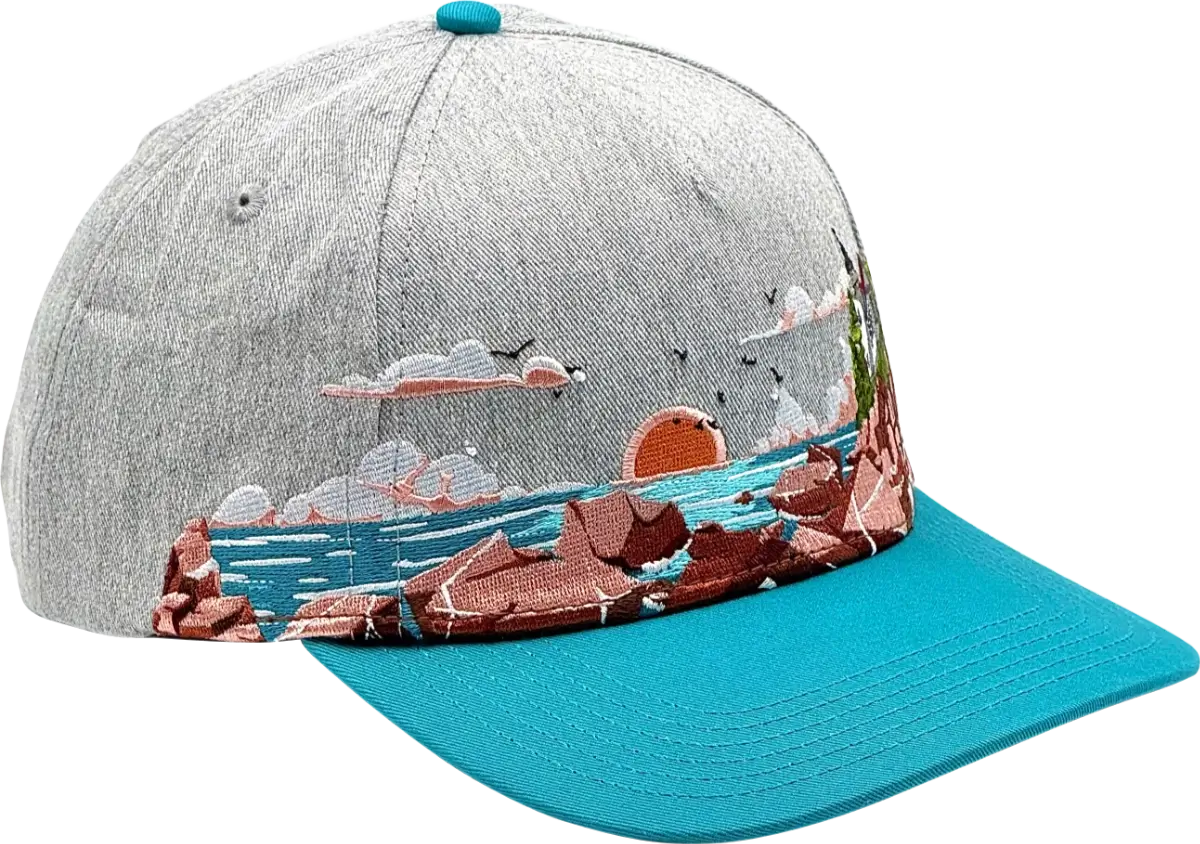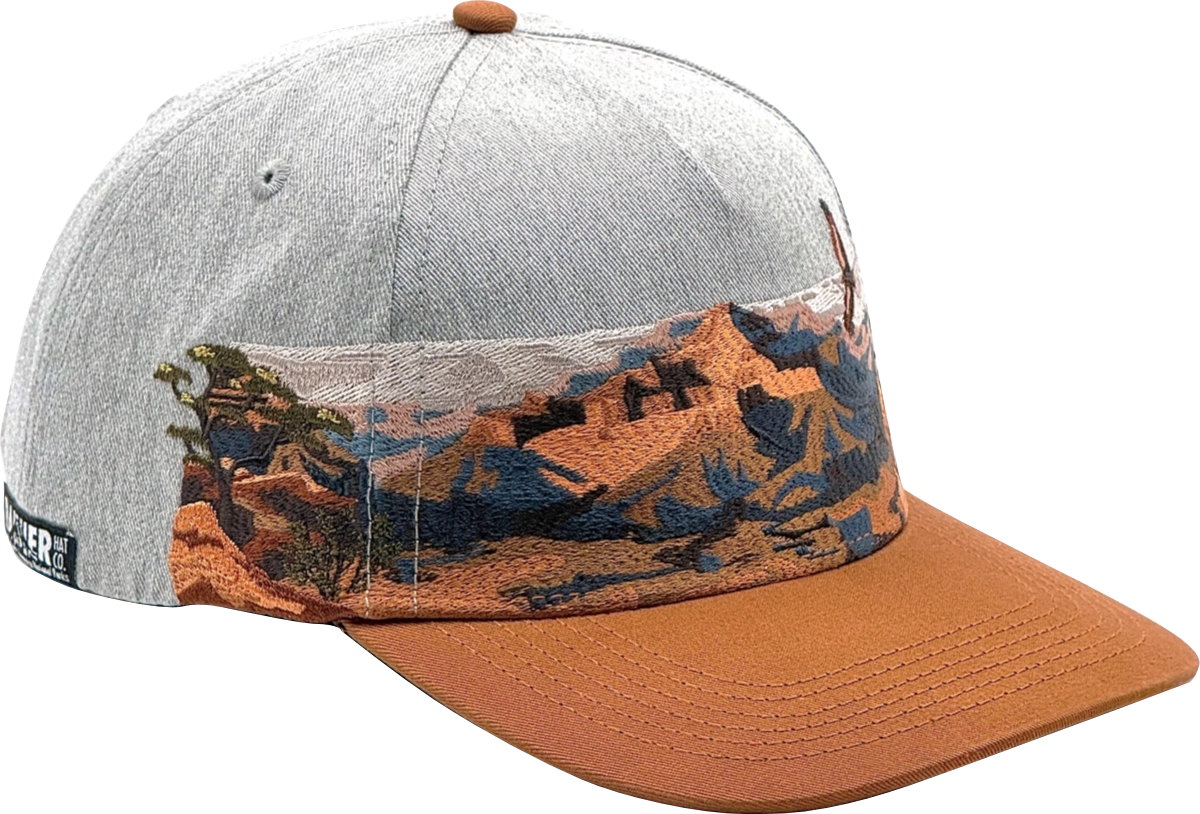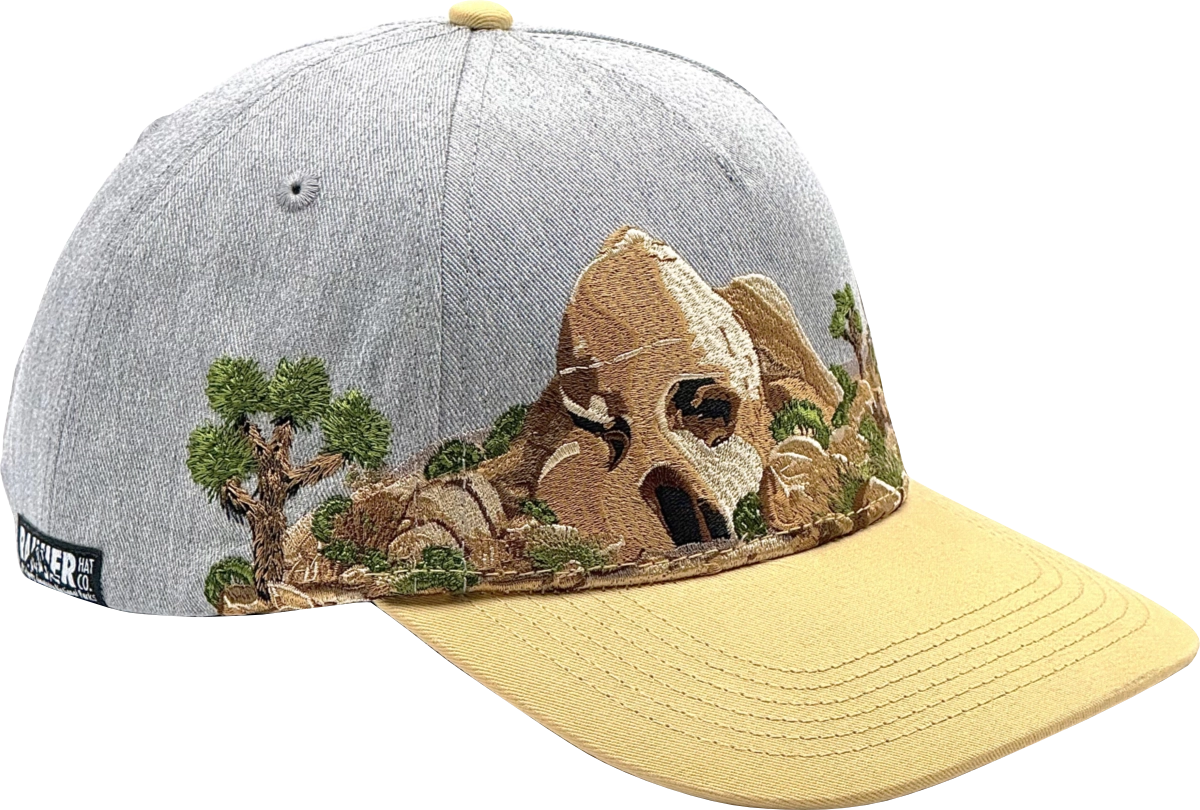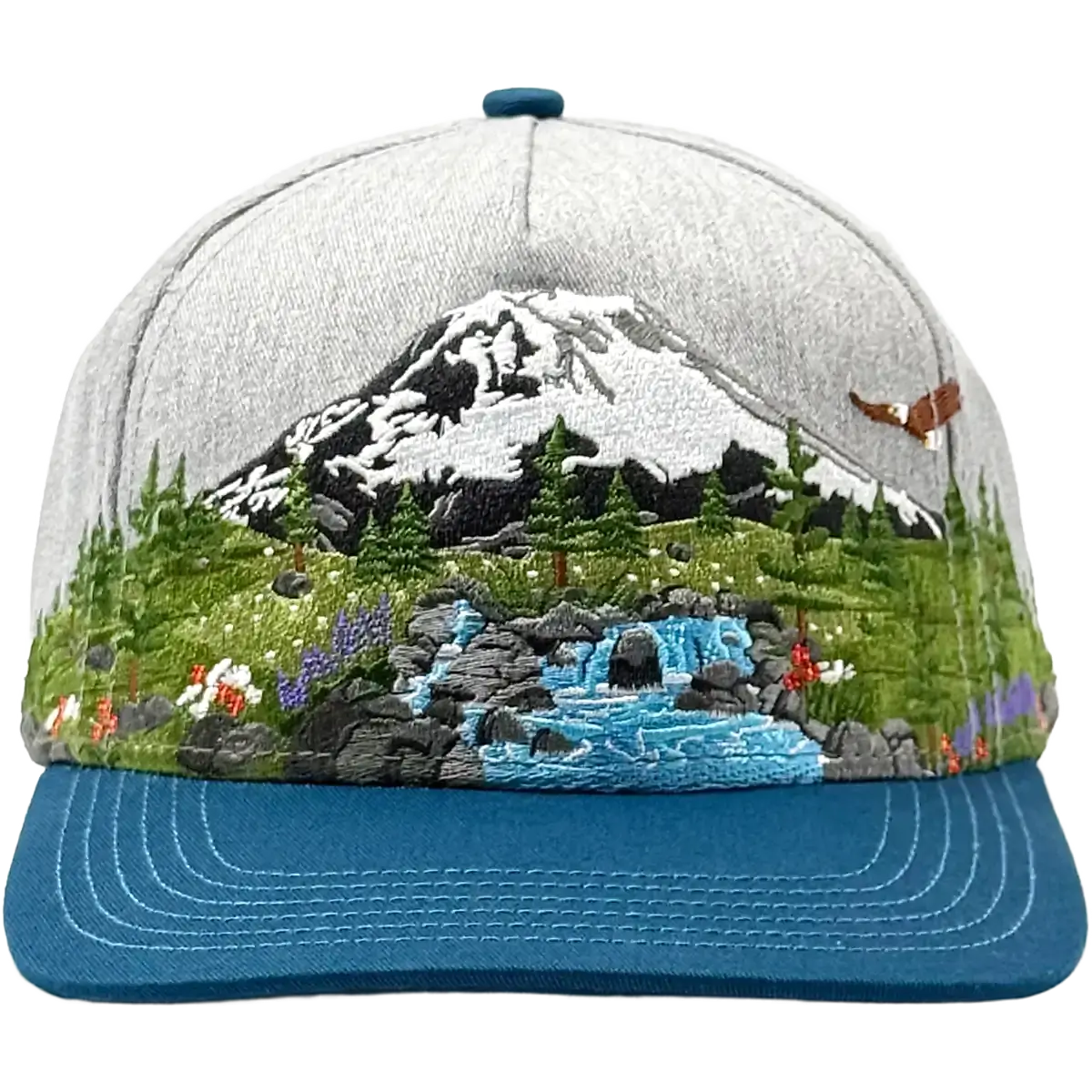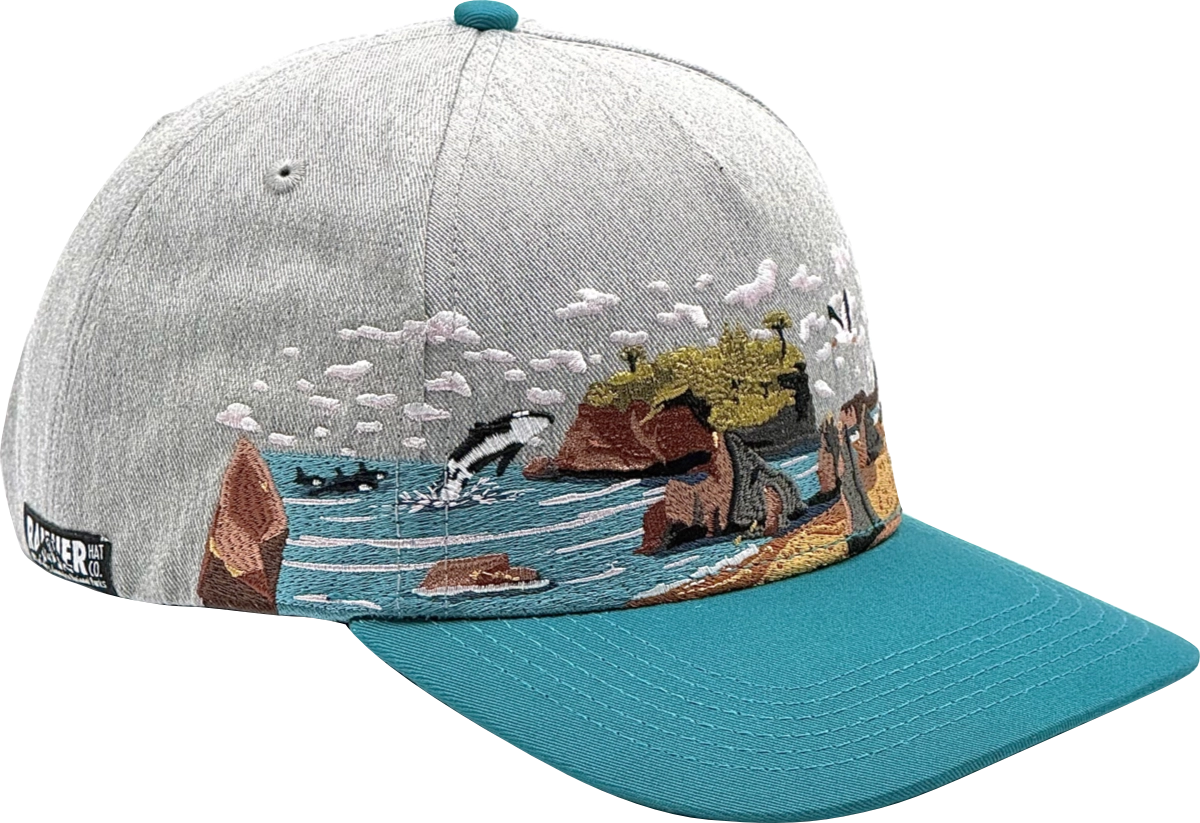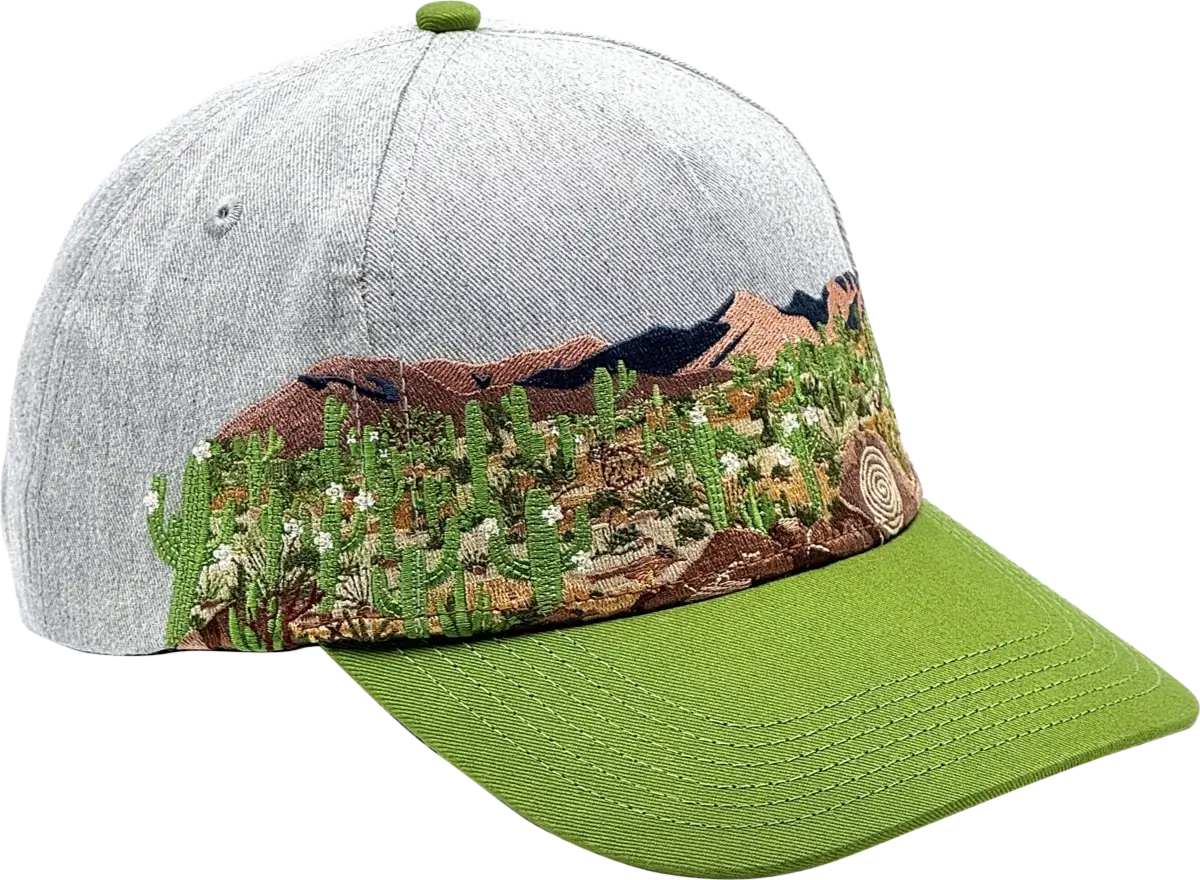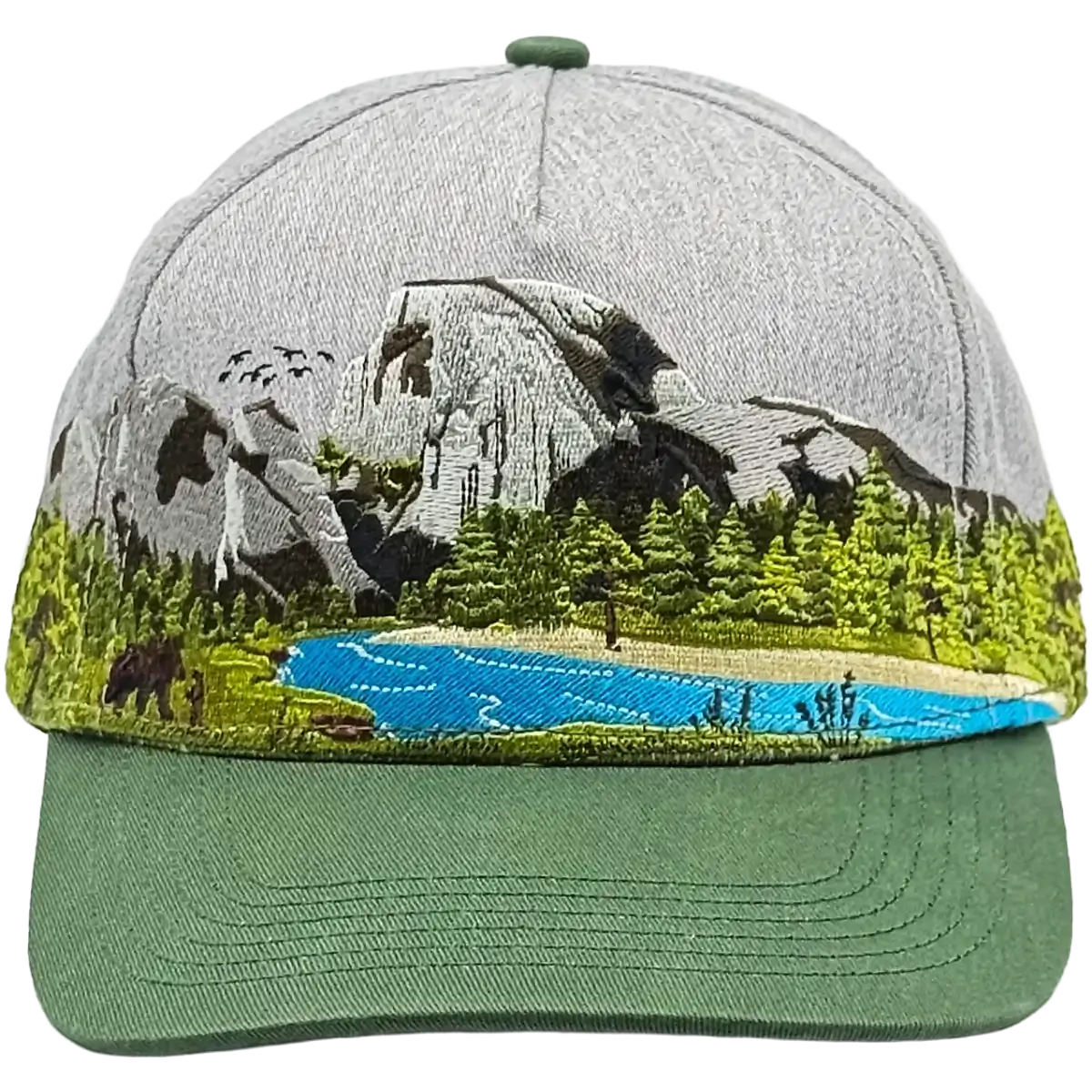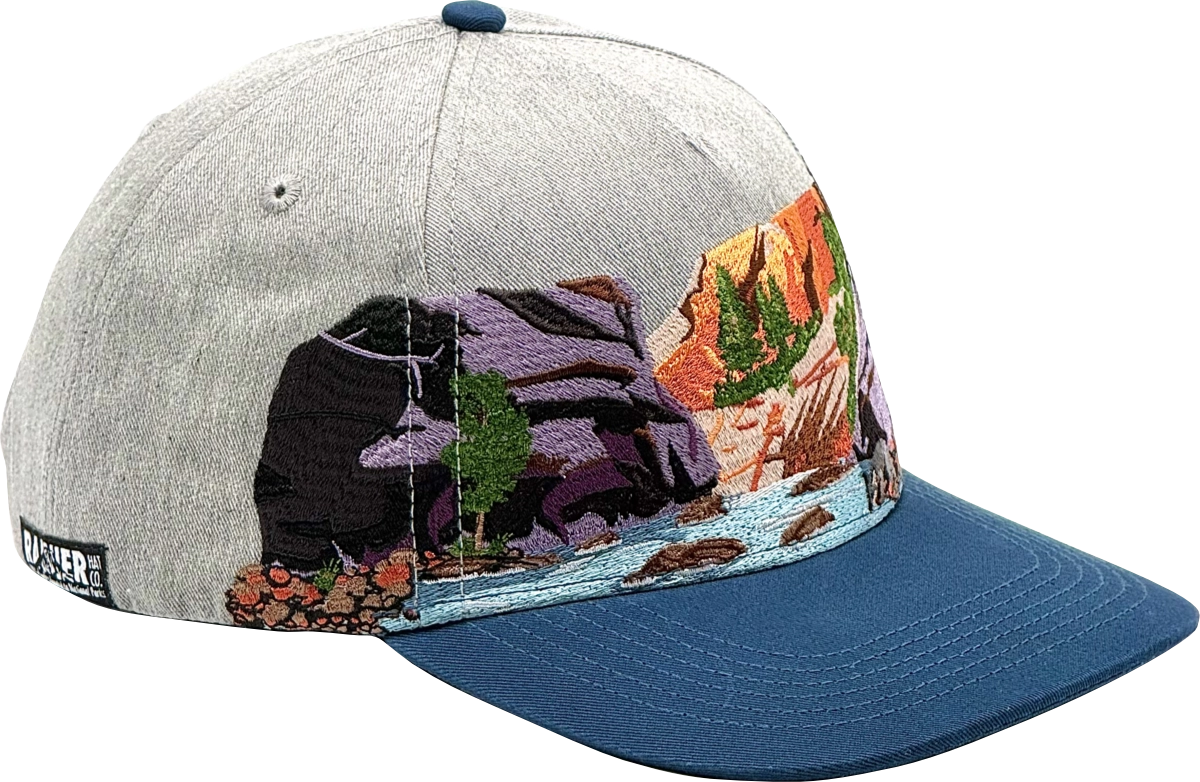Yellowstone
National Park Hat
Details
- Embroidered panoramic design
- Adjustable snapback hat
- Structured mid-profile 5 panel
- Cotton, handwash
- Free shipping, free returns
- 100% of profits donated to National Parks
More National Parks
Our Mission
I'm Ian - from Seattle, and at Rainier Hat Co. we're dedicated to giving back to the places that inspire us every day. From the glaciers of Mount Rainier to the grand prismatic springs of Yellowstone, our national parks are treasures that deserve our support.
That's why we've made a commitment that goes beyond the norm: donating all our profits to these natural sanctuaries. It's not just about creating high-quality (and awesome) hats inspired by the beauty of the outdoors, it's about contributing to the preservation of these areas for future generations to enjoy.
Yellowstone National Park Hat Inspiration
From the boardwalk of the Midway Geyser Basin Trail you can find the inspiration for this Yellowstone National Park hat. Walking out over the spring on the boardwalk you can truly appreciate the spring's immense size - at approximately 370 feet in diameter and over 121 feet deep, it's the largest hot spring in the United States and the third largest in the world. The vibrant colors are created by heat-loving microorganisms, each thriving in different temperature zones within the spring, getting as hot as 160° F.
On the left and right you can see American bison, part of the largest herd in the United States with a population between 2,300 and 5,500 animals and weighing up to 2,000 pounds. They can be seen all over Yellowstone grazing and stopping traffic as they wander across roads.
Old Faithful is, a bit creatively displayed in the back as it does in fact exist in an entirely different section of the park. While not the largest or most predictable geyser in the park, it erupts about every 90 minutes shooting thousands of gallons of boiling water up to 180 feet into the air and has become a staple of Yellowstone.
Design Process
Creating these National Park hats with their panoramic embroidery is a detailed process going beyond simply buying and reselling bulk designs.
The first step is a deep dive into what makes each park unique. From the Bison of Yellowstone and the Roseated Spoonbills of the Everglades to the panoramic views of Angels Landing in Zion, our goal is to highlight the beauty of each park. We try to find a specific viewpoint in the park to show off and what we need to do to capture the feeling of being there. While sometimes we ad-lib a bit of the design to include other elements to capture the feeling of the park as a whole, we try hard to find an actual place in the park you can visit even giving you an exact Google maps QR code with every hat.
Then we get to designing! Embroidery is naturally limited in colors and we use a 15 color (the most you'll find) edgeless embroidery process which takes upwards of 90 minutes and over 60,000 stitches per hat, but allows us to show off every detail from that epic mountain range to the colorful flowers in your favorite park.
Finally the design get digitized for embroidery, a sample is made for any final tweaks, and we go to production getting these fantastic hats on your heads.
And 100% of our profits are donated right back to our National Parks .
Visit the Inspiration
To reach Grand Prismatic Spring in Yellowstone National Park start from the Midway Geyser Basin lot which also serves the Excelsior Geyser and other features in the basin.
From the parking area a boardwalk trail crosses the Firehole River and makes a loop through the basin. At just over half a mile round trip and fully accessible, although narrow, the boardwalk brings visitors close to Grand Prismatic Spring where the rainbow colors of the spring can be seen from its edge along with rising steam changing with the weather.
Because of the spring’s size the view from the boardwalk does not show the entire shape or full range of colors. For a higher vantage point many visitors also hike to the Grand Prismatic Overlook on the Fairy Falls Trail about a mile south of the basin parking area. That short hike gives a broader view of the spring and surrounding pools while the boardwalk provides the closer perspective.
Yellowstone National Park
Yellowstone National Park, established in 1872, is the first national park in the world and a cornerstone of America's natural heritage. Encompassing over 2.2 million acres, Yellowstone boasts a variety of unique landscapes, from lush forests and expansive meadows to rugged mountains and pristine lakes. The park is home to an incredible array of wildlife, including bison, elk, grizzly bears, and wolves. Visitors can explore the park's extensive network of trails, drive its scenic roads, and take in its breathtaking vistas, making Yellowstone a destination that offers something for everyone.
One of the park's most iconic features is Old Faithful, a geyser that has captivated visitors for generations with its predictable eruptions. Named for its consistent performance, Old Faithful erupts approximately every 90 minutes, shooting water and steam up to 185 feet into the air. This geothermal wonder is part of the larger Upper Geyser Basin, which contains the highest concentration of geysers in the world. The basin's boardwalks allow visitors to safely explore the area, witnessing the power and beauty of these natural phenomena up close.
Grand Prismatic Spring, the largest hot spring in the United States, is another of Yellowstone's most awe-inspiring features. Measuring approximately 370 feet in diameter and 121 feet deep, this geothermal marvel is renowned for its vivid colors, which range from deep blue at the center to vibrant greens, yellows, and oranges at the edges. These striking hues are the result of microbial mats that thrive in the spring's varying temperatures. The Grand Prismatic Spring can be viewed from ground level along the boardwalk or from above via the Fairy Falls Trail, offering different perspectives on its stunning beauty.
Yellowstone is also home to a myriad of other geothermal features, including mud pots, fumaroles, and hot springs. The Norris Geyser Basin, the park's hottest and most dynamic thermal area, is a must-see for those interested in geothermal activity. Here, visitors can witness Steamboat Geyser, the tallest active geyser in the world, which can shoot water over 300 feet into the air during its rare but spectacular eruptions. The basin's constantly changing landscape provides a fascinating glimpse into the powerful forces shaping the park.
In addition to its geothermal wonders, Yellowstone offers countless opportunities for outdoor recreation. The park's rivers and lakes are perfect for fishing, boating, and swimming, while its backcountry trails provide a haven for hikers and backpackers. In winter, Yellowstone transforms into a snowy paradise, attracting cross-country skiers, snowshoers, and snowmobilers. Whether you're seeking adventure, solitude, or simply a chance to connect with nature, Yellowstone National Park is a timeless treasure that continues to inspire and amaze all who visit.
Most Popular Hikes
Mount Washburn
Mount Washburn offers panoramic views of Yellowstone National Park from its summit. The trail is well-maintained and provides opportunities to see wildflowers and wildlife, including bighorn sheep. Hikers are rewarded with a stunning 360-degree view at the top, encompassing the park's diverse landscapes.
Fairy Falls
The Fairy Falls hike takes you to one of Yellowstone's tallest waterfalls, offering a serene and scenic route through forested areas. Along the way, you'll get an impressive view of the Grand Prismatic Spring from above. This relatively easy trail is perfect for families and those looking to enjoy a peaceful hike.
Avalanche Peak
Avalanche Peak is a challenging hike that rewards adventurers with breathtaking views of the Absaroka Range and Yellowstone Lake. The trail is steep and demanding, best suited for experienced hikers. The effort is well worth it for the panoramic vistas and the sense of accomplishment upon reaching the summit.
Trout Lake
The Trout Lake hike is a short and scenic trail leading to a picturesque mountain lake. This easy hike is great for families and offers excellent opportunities for wildlife viewing, including otters and waterfowl. The tranquil setting makes it a perfect spot for a relaxing and enjoyable outdoor experience.
Grand Prismatic Spring
Grand Prismatic Spring, located in Yellowstone National Park's Midway Geyser Basin, is the largest hot spring in the United States and the third largest in the world. This geothermal marvel spans approximately 370 feet in diameter and plunges to a depth of 121 feet. Its grandeur and vivid coloration make it one of Yellowstone's most iconic and photographed features.
The spring's remarkable colors are caused by microbial mats that grow around the edges of the mineral-rich water. These mats thrive in the spring's varying temperatures, creating a rainbow-like effect with bands of green, yellow, orange, and red surrounding the deep blue center. The intense blue color in the center of the spring is due to the purity and depth of the water, which absorbs all colors of the spectrum except blue. The microbial mats themselves are home to heat-loving bacteria that vary in color depending on the temperature of the water they inhabit, showcasing a beautiful display of thermophilic life.
Visitors can experience the Grand Prismatic Spring from several vantage points. A boardwalk circles through the spring, allowing close-up views of its vibrant edges and steaming waters. For a more panoramic perspective, the Fairy Falls Trail offers a short hike to an overlook that provides a stunning aerial view of the spring and its surroundings. Grand Prismatic Spring remains an awe-inspiring testament to the geothermal wonders of Yellowstone, offering a glimpse into the intricate and colorful world of extremophile organisms that thrive in this unique environment.
Old Faithful
Old Faithful, one of Yellowstone National Park's most renowned landmarks, is a geyser known for its predictability and impressive eruptions. Located in the Upper Geyser Basin, it was named in 1870 during the Washburn-Langford-Doane Expedition. Old Faithful erupts approximately every 90 minutes, with water and steam shooting up to 185 feet into the air. This regularity has made it a favorite among park visitors who gather around the geyser to witness its spectacular display.
The eruptions of Old Faithful are driven by a complex underground plumbing system where water is heated by magma. As pressure builds up, it eventually forces the water and steam through the geyser's vent, resulting in a powerful and dramatic eruption. Each eruption lasts between 1.5 to 5 minutes, and the amount of water expelled can be up to 8,400 gallons. This natural phenomenon showcases the geothermal activity that lies beneath Yellowstone's surface and provides a captivating experience for all who visit.
Old Faithful is surrounded by an array of other geysers and hot springs in the Upper Geyser Basin, the area with the highest concentration of geothermal features in the world. The boardwalks and trails around Old Faithful allow visitors to safely explore these fascinating formations and learn more about the geology of the park. Additionally, the Old Faithful Visitor Education Center offers exhibits and information on the geyser's history, the science behind its eruptions, and the broader geothermal landscape of Yellowstone.
